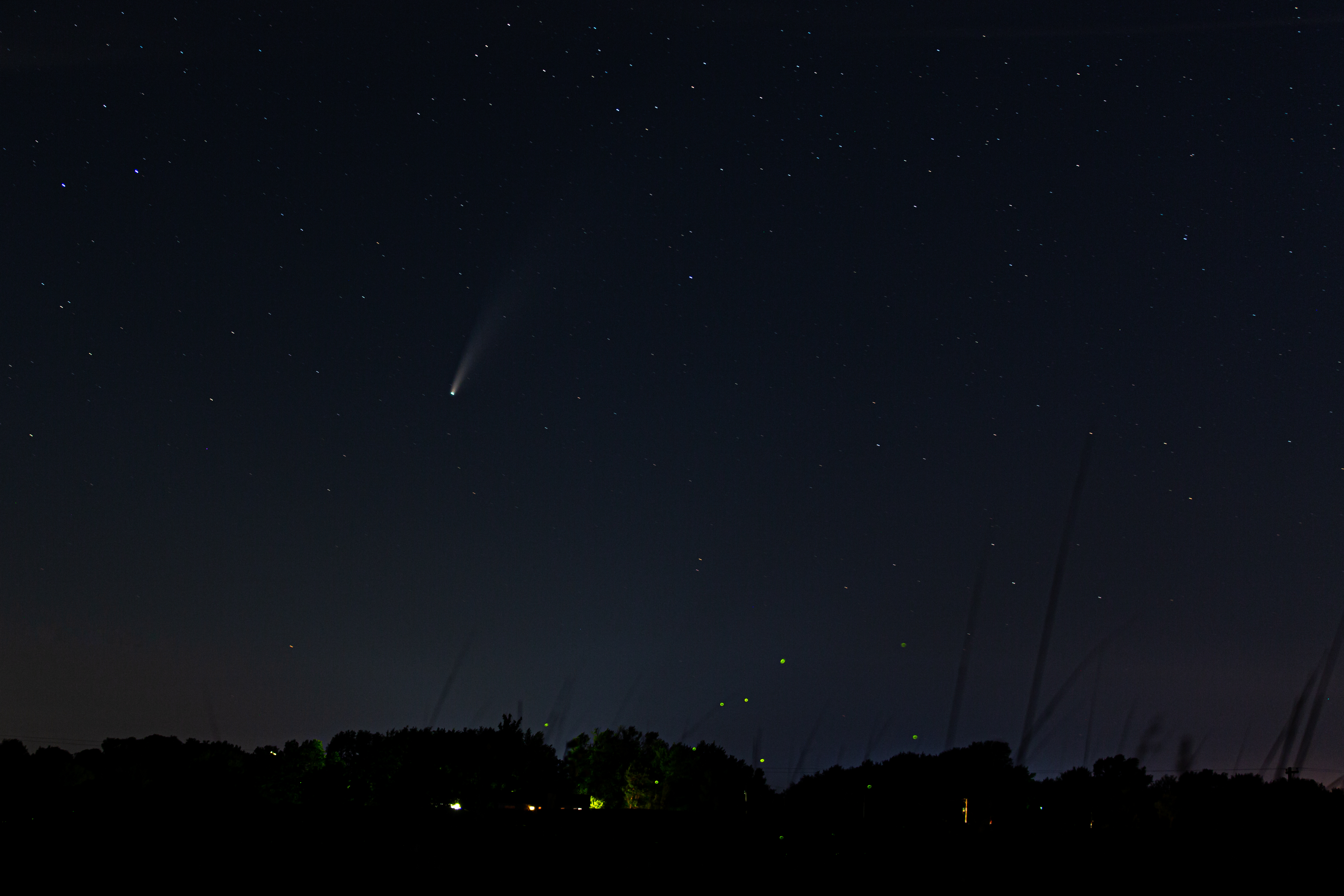Comet NEOWISE
The past few weeks have been rather exciting for the astrophotography community with the appearance of Comet NEOWISE (named after the space telescope that spotted it, the Near-Earth Object Wide-field Infrared Survey Explorer). It is a beautiful comet that can be seen by the naked eye in dark enough conditions. For a few weeks it's only been up in the early morning hours, but recently we've been able to see it from about 9:30 to 11:30pm here in the Chicago suburbs. I got a chance to head out last night and see if I could photograph this rare comet myself. While it will be visible until mid-August, after that you'll have to wait another 6000 years or so to see it again. I figured I didn't want to wait that long...
I packed up my gear - a 16-35mm, 50mm, 70-200mm, and my 11" Schmidtt-Cassegrain Telescope for an extreme closeup, loaded it all in the car and headed out at sunset. I drove over to a local forest preserve and was delighted to find the small parking lot full already with a number of families out with binoculars ready for the evenings show. While I was getting everything setup and the scope aligned there were a few cloud bands but nothing significant. At around 9:40 people started spotting it with binoculars. My eyes are so bad I couldn't see it yet, so I took the camera off the telescope and started with some wide shots at 70mm to get honed in.
While I was dialing in my focus a car came by really slowly and was shining their lights at the group, a few of us were about to yell or say something, but it slowly turned around and we saw the back of the SUV said POLICE. Patience is a virtue.
Zooming in close at 200mm I flipped the camera to a vertical orientation and captured this shot. This is only a single exposure at 8s since I was on my tripod and not the CGEM mount as a practice run. I plan on going out in the next few nights to get tracked shots so I can create a composite and really get some details from the tail.

As it got darker I wanted to get a few wide shots before moving back over to the big 11" SCT. I opened the camera up to 70mm and started taking exposures between 10 and 30 seconds. Since they were un-guided on a basic tripod they weren't super sharp, however I love the fireflies in the foreground.

After some wide shots I wanted to see what it looked like through my Celestron Ultima 11". I mounted the camera back on and tried to slew to the comet, but really struggled. I've never tried to find something that wasn't already in the hand controller, and I didn't easily find a way to manually enter coordinates. After a little bit of frustration I took the camera off the scope, setup the tripod directly behind it with the 70-200mm lens essentially over the telescope, and got NEOWISE aligned dead center. Once it was centered on the camera I slewed the telescope blindly to bring it into alignment with the 70-200mm lens. I re-mounted the SLR on the scope and after a minor adjustment was right on the comet. However, it being 11" even with the f/6.3 reducer on the back, it was still way over-powered.
Its a wonderful closeup but if I am going to stack 50 shots, I want the whole tail in frame as well. Here's a single exposure closeup of the comet head itself.

It was a wonderful evening despite the mosquitoes, and a good test-run. I should get some much sharper images by mounting my 70-200mm directly on the CGEM mount itself, and I also plan on taking out my old 600-1000mm lens to see if I can get something from that. Its f/8 wide open if I recall correctly, so it's going to be tough.
Be sure to checkout NEOWISE in the early evenings between now and mid-August. A good pair of binoculars should be all you need - to find it, look Northwest and you'll see the Big Dipper. Follow that down to the horizon, and NEOWISE should be about 20 degrees up (about two fists at arms length, one on top of the other). Take your time, and if it is a good dark evening you might be able to spot it without binoculars. Clear skies!